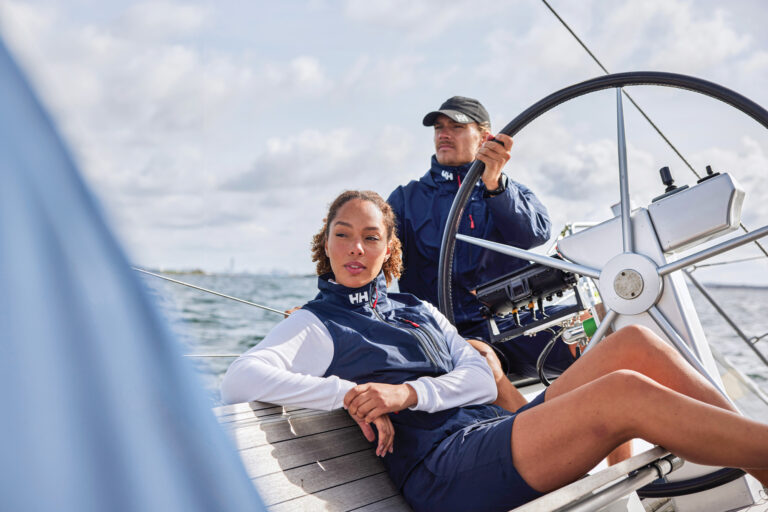
Dave Martin began pushing ink in 1951 for the late yacht-design legend Olin Stephens. Martin opened his own office in 1955, and while he took time off a few years ago to go sailing and fishing, he’s back at the board working on yacht designs for a new book.
His timing is perfect.
Martin’s Naval Architect’s Notebook, published in 1972, was required reading for students of the art (including me). His tales of transforming complicated ideas into successful designs epitomized a commonsense approach that, at the time, wasn’t common — and is damn near extinct today.
The direction of today’s yacht design inspired Martin to put down his fishing pole and pick up his pen. “Somebody had to do something,” he said with a laugh.
His fleet of new designs is thought-provoking. “You were the inspiration for one of ’em,” Martin told me. “Remember you were griping about the complication of today’s high-tech, high-style, high-performance rides?”
“There’s not much we can do about it,” I said.
“Not so,” he answered. “The something I’ve done is the Ogborne Odyssey.” He continued: “How about a new custom-built, outboard-powered cruiser with an enclosed head and a queen-size berth for 4,000 bucks?”
He had my attention.
“Remember when you were a kid, all ya needed was a few sheets of plywood to screw an outboard motor to and you were on the water?” he asked.
“How about a new custom-built, outboard-powered cruiser with an enclosed head and queen-size berth for 4,000 bucks?”
“The Ogborne Odyssey will require a few trips to Home Depot and minimal skill to assemble.”
His epiphany had occurred during a breakfast with his pal Dave Ogborne. “Ogborne is a big cheese in trash removal in our town,” Martin said. “I got to thinking about hull forms and bread [see: cash] as I was buttering my toast, and it occurred to me that the cheapest hull to build is a scow.”
Martin had moved on to his omelet when he realized the hull he needed was already available.
Ogborne was reciting the size and cost of his finest dumpster as Martin considered the specifications. “Twenty-two-foot length overall, 8-foot beam, 6 feet from wheels to sheer, 3-foot draft, light load,” noodled Martin, adding that it would be necessary to modify the bow. “Forty-five degrees would be perfect.”
Ogborne expressed interest in perusing the design, which Martin crafted in an appealing profile and clever arrangement.
When we last spoke, he was working on stability and performance calculations. “With modest power, she should see 18 knots,” Martin said, explaining that maximum speed was less a concern than stopping her was, once she got going. “I’m pretty sure other yachtsmen will yield right of way when they see her coming.”
Will the marine industry pay attention to Martin’s wisdom and keep-it-simple message? Given the thousands of boats on the water built to his designs, I believe they might be wise to listen.









